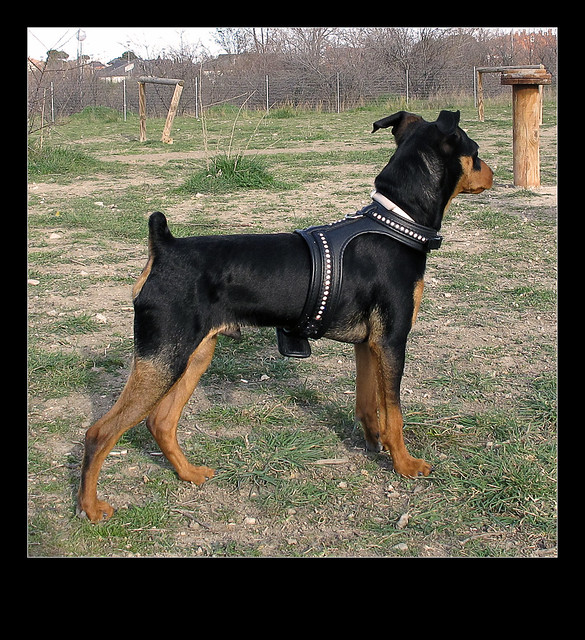 |
| A female Doberman Pinscher. (Photo credit: Wikipedia) |
Dobermans are a very nice breed of dog and over recent years they have become very popular. It is very important to be aware of the close bond that this breed of dog will adopt with its owner. This breed of dog tends to adopt a strong bond with only one person for the whole of their life.
Once the bond has been established the dog will be very loyal and protective towards all members of the family. This is not a breed of dog that can be left alone for long periods of time, therefore, they should are not suitable for people who do not have a lot of time that they can devote to the dog.
If you are one of the people who are determined to have a Doberman as their companion then it will not be difficult to find places to get the puppy. Although there is an endless list of places where you can get a puppy from it can be hard to find a reputable source for the puppy.
Although it can be cheaper to get a puppy from a flea market, pet shop, puppy mill or yard sale it is best to avoid doing this, as the people selling puppies here do not really care about the dogs and their welfare. Buying a puppy at one of these places could mean that you get a pup that is unhealthy or suffering from health or behavioral problems.
It is important to learn all of the required information before going to get a puppy. Having a good understanding of the breed will make it possible to choose a puppy that will be a healthy happy addition to the family. It is fair to say that getting a dog from a breeder may cost more however in most cases it will be a healthier dog and this will, therefore, save you money over the longer term. There are some health issues relating to this breed and it is important to be aware of these prior to getting a dog.
If you already aware of where to find a Doberman puppy then it will be quite easy to adopt one. A good source to get a puppy from would be a good breeder and there will probably be some in your local area. A list of good breeders can be obtained from the local vets or the Doberman Club. Although it will probably cost more money to purchase the puppy from a good breeder this source will reduce the risks considerably and could even save you some money.
Depending on where you live the docking of the tail and cropping of the ears may be illegal. When it comes to things like this it is very important to check the laws for your area. There is an increasing number of people who are viewing this as being a cruel and unnecessary practice.
About the Author: Jordan Schmidt
Find an overview of the benefits you get when you own a Doberman and more information about Dobermans for sale at http://www.sureshotdobermans.com now.
|




